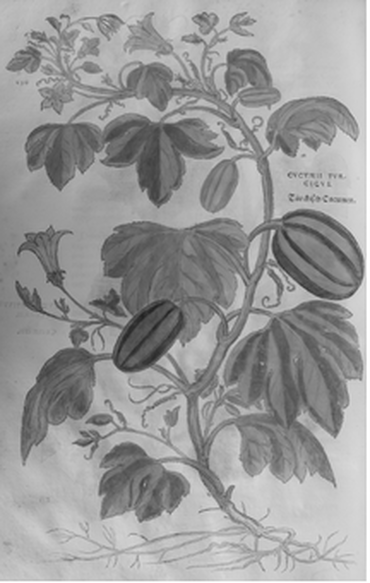|
Leonhard Fuchs, De Historia Stirpium (Basel, 1542), 698. Courtesy of the Peter H. Raven Library, Missouri Botanical Garden.
|
Europeans Compare Pumpkins to MelonsThis illustration of a generic oval-shaped, ribbed fruit labeled Cucumis turcicus ("Turkish cucumber") in Leonard Fuchs’ 1542 botanical dictionary De historia Stirpium resembles many forms of squashes and pumpkins originating in the Americas as well as melons native to Africa and Asia. The ambiguity of the imagery and terminology – pumpkins, squashes, and melons were all called pompions - reflects overlapping definitions and conceptions of newly introduced plants from the Americas and more familiar fruits and vegetables used for generations in Europe. Even so, while many considered sweet melons and juicy cucumbers food for fine dining, they viewed pumpkin and squash as food eaten during desperate times.
|

|
|
- Home
- About the Book
- About the Author
-
Online Exhibition
- Just Another Squash: 12,000 BCE to 1600
- From Pumpkin Beer to Pumpkin Pie: 1600 to 1799
- The Making of a Rural New England Icon: 1800 to 1860
- The Pumpkin and the Nation: 1861 to 1899
- Americans Celebrate the Fall Harvest with Pumpkins: 1900 to 1945
- The Changing Nature of Pumpkins: 1946 to the Present
- The Changing Nature of American Rural Economies: 1946 to the Present
- Events
- Contact

